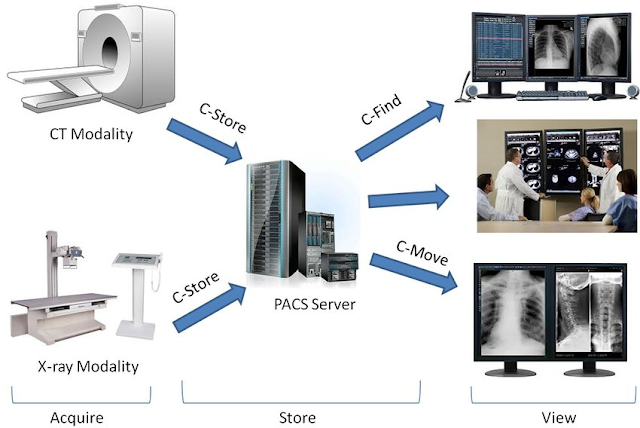How Cloud Image Analysis Revolutionizes Remote Diagnosis?
Medical imaging has entered a new era where distance no longer limits diagnosis quality.
With
cloud-based solutions, including DICOM viewer online platforms, healthcare providers can now analyze complex medical
images from anywhere in the world.
This
technological advancement is particularly valuable when specialists aren't
locally available but their expertise is urgently needed.
Medical
professionals like you no longer need to be physically present to provide
life-saving diagnoses.
The
cloud has eliminated geographical barriers, bringing expert analysis to remote
and underserved areas in minutes rather than days.
How Cloud-Based
Image Analysis Works?
When you
upload medical images to a cloud platform, powerful algorithms begin processing
the data immediately.
These
systems can handle various imaging formats, including X-rays, MRIs, CT scans,
and ultrasounds.
The
technology converts analog medical images into digital data that can be stored,
shared, and analyzed remotely.
The process is remarkably efficient—what once took hours can now be completed
in minutes or even seconds.
Key Technical Components
|
Component |
Function |
Benefit |
|
AI Algorithms |
Identify patterns
and anomalies in medical images |
30-40% faster
diagnosis with up to 96% accuracy |
|
Cloud Storage |
Secure remote
access to medical images |
Reduces on-site
hardware costs by 50-70% |
|
Encryption |
Protects patient
data during transmission |
Ensures HIPAA
compliance and data security |
The Impact of AI in
Medical Image Analysis
Modern
cloud platforms use artificial intelligence to enhance diagnostic capabilities.
When you submit an image for analysis, AI algorithms can:
- Flag potential areas of concern
- Compare with thousands of similar cases
- Suggest possible diagnoses
- Highlight subtle details that might be
overlooked
Research
published in Nature Medicine found that AI-assisted diagnosis correctly
identified 95% of lung abnormalities, compared to 88% accuracy from
radiologists working alone. When AI and human expertise combine, the accuracy
jumps to an impressive 99%.
Remote Diagnostics
in Practice
Imagine
you're working in a rural clinic with limited specialist access. A patient
arrives with symptoms requiring urgent neurological assessment.
Using a DICOM viewer online, you can upload
their brain scan to the cloud where:
- The image is processed and enhanced
- AI algorithms perform preliminary analysis
- A specialist remotely views the images in real-time
- Diagnostic information is returned
quickly
This
workflow has reduced diagnosis time from days to hours in many locations, with
some platforms reporting turnaround times of under 30 minutes for emergency
cases.
Security and Compliance
Considerations
When
dealing with sensitive patient data, security isn't optional. Modern
cloud-based diagnostic platforms use:
● End-to-end
encryption protecting data
during transmission
● Role-based access control limiting who can
view images
● Audit trails tracking all system interactions
● Automated compliance monitoring for healthcare
regulations
These
measures ensure you can confidently use cloud solutions while maintaining
patient privacy and regulatory compliance.
Future Developments
The
technology continues to evolve rapidly. Emerging
trends you'll want to watch include:
● Advanced 3D reconstruction from 2D images
● Integration with wearable health monitoring
devices
● Multi-modal image analysis combining different
imaging types
● Federated learning systems that improve AI
without sharing patient data
Making the
Transition to Cloud-Based Diagnostics
Healthcare
facilities transitioning to cloud-based image analysis typically see a return on
investment within 12-18 months. The initial setup requires:
- Secure internet connectivity with
sufficient bandwidth
- Compatible imaging equipment or conversion software
- Staff training on new platforms
- Integration with existing electronic
health records
The Global Impact
Cloud-based
diagnostics have particularly transformed healthcare in developing regions.
A 2023
WHO study revealed that remote diagnostic services increased specialist
consultation accessibility by 76% in rural African communities.
When you
implement these solutions, you're not just improving your practice—you're
participating in a global movement toward more equitable healthcare access.
Conclusion
Cloud-based
image analysis represents a significant leap forward in medical diagnostics.
The
combination of AI technology, secure cloud platforms, and intuitive DICOM viewer interfaces means
healthcare providers worldwide can now deliver faster, more accurate diagnoses
regardless of location.
As you
consider adopting these technologies, remember that the goal remains the same:
providing the best possible care for patients.
Cloud-based diagnostic tools simply give you powerful new ways to achieve this mission.





Comments
Post a Comment